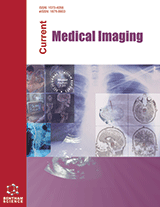[1]
Amin EN, Closser DR, Crouser ED. Current best practice in the management of pulmonary and systemic sarcoidosis. Ther Adv Respir Dis 2014; 8(4): 111-32.
[2]
Keijsers RG, Veltkamp M, Grutters JC. Chest Imaging. Clin Chest Med 2015; 36(4): 603-19.
[3]
Juan Mañá. Molecular imaging in sarcoidosis. Curr Opin Pulm Med 2011; 17(5): 325-31.
[4]
Greco FG, Spagnolo P, Muri M, et al. The value of chest radiograph and computed tomography in pulmonary sarcoidosis. Sarcoidosis Vasc Diffuse Lung Dis 2014; 31: 108-16.
[5]
Scadding JG. Prognosis of intrathoracic sarcoidosis in England. A review of 136 cases after five years’ observation. BMJ 1961; 2: 1165-72.
[6]
Basu S, Zhuang H, Torigian DA, Rosenbaum J, Chen W, Alavi A. Functional imaging of inflammatory diseases using nuclear medicine techniques. Semin Nucl Med 2009; 39(2): 124-45.
[7]
Maturu VN, Rayamajhi SJ, Agarwal R, Aggarwal AN, Gupta D, Mittal BR. Role of serial F-18 FDG PET/CT scans in assessing treatment response and predicting relapses in patients with symptomatic sarcoidosis. Sarcoidosis Vasc Diffuse Lung Dis 2016; 33(4): 372-80.
[8]
Adams H, Keijsers RG, Korenromp IH, Grutters JC. FDG PET for gauging of sarcoid disease activity. Semin Respir Crit Care Med 2014; 35(3): 352-61.
[9]
Acar T, Savas R, Kocacelebi K, Ucan ES. Corticosteroid responsive sarcoidosis with multisystemic involvement years after initial diagnosis: A lymphoma mimicker on 18-FDG PET/CT. J Clin Imaging Sci 2015; 5: 40.
[10]
Soussan M, Augier A, Brillet PY, Weinmann P, Valeyre D. Functional imaging in extrapulmonary sarcoidosis: FDG-PET/CT and MR features. Clin Nucl Med 2014; 39(2): e146-59.
[11]
Palestro CJ, Love C. Decreased sensitivity of (18)F-fluorodeoxyglucose imaging in infection and inflammation. Semin Nucl Med 2012; 42(4): 261-6.
[12]
Ramachandraiah V, Aronow W, Chandy D. Pulmonary sarcoidosis: An update. Postgrad Med 2017; 129(1): 149-58.
[13]
Aleksonienė R, Zeleckienė I, Matačiūnas M, et al. Relationship between radiologic patterns, pulmonary function values and bronchoalveolar lavage fluid cells in newly diagnosed sarcoidosis. J Thorac Dis 2017; 9(1): 88-95.
[14]
Keijsers RG, Veltkamp M, Grutters JC. Chest imaging. Clin Chest Med 2015; 36(4): 603-19.
[15]
Skali H, Schulman AR, Dorbala S. 18F-FDG PET/CT for the assessment of myocardial sarcoidosis. Curr Cardiol Rep 2013; 15(4): 352.
[16]
Kataoka S, Momose M, Fukushima K, et al. Regional myocardial damage and active inflammation in patients with cardiac sarcoidosis detected by non-invasive multi-modal imaging. Ann Nucl Med 2017; 31(2): 135-43.
[17]
Zandieh S, Bernt R, Mirzaei S, Haller J, Hergan K. Image fusion between 18F-FDG PET and MRI in cardiac sarcoidosis: A case series. J Nucl Cardiol 2016; 25(4): 1128-34.
[18]
Vinas FC. Diagnosis and management of neurosarcoidosis. J Clin Neurosci 8(6): 505-13.
[19]
Matsumoto K, Ehara S, Sakaguchi M, Otsuka K, Hasegawa T, Shimada K. Clinical characteristics of late gadolinium enhancement in patients with cardiac sarcoidosis. Osaka City Med J 2015; 61(1): 9-17.
[20]
Vargas DL, Stern BJ. Neurosarcoidosis: Diagnosis and management. Semin Respir Crit Care Med 31(4): 419-27.
[21]
Tana C, Wegener S, Borys E, et al. Challenges in the diagnosis and treatment of neurosarcoidosis. Ann Med 2015; 47(7): 576-91.
[22]
Pawate S, Moses H, Sriram S. Presentations and outcomes of neurosarcoidosis: A study of 54 cases. QJM 2009; 102(7): 449-60.
[23]
Grozdic MI, Sobic-Saranovic D, Videnovic-Ivanov J, Saranovic D, Odalovic S, Artiko V. FDG PET/CT in bone sarcoidosis. Sarcoidosis Vasc Diffuse Lung Dis 2016; 33(1): 66-74.
[24]
Mostard RL, Prompers L, Weijers RE, et al. F-18 FDG PET/CT for detecting bone and bone marrow involvement in sarcoidosis patients. Clin Nucl Med 2012; 37(1): 21-5.
[25]
Conte G, Zugni F, Colleoni M, Renne G, Bellomi M, Petralia G. Sarcoidosis with bone involvement mimicking metastatic disease at (18)F-FDG PET/CT: Problem solving by diffusion whole-body MRI. Ecancermedicalscience 2015; 9: 537.

 43
43 4
4










